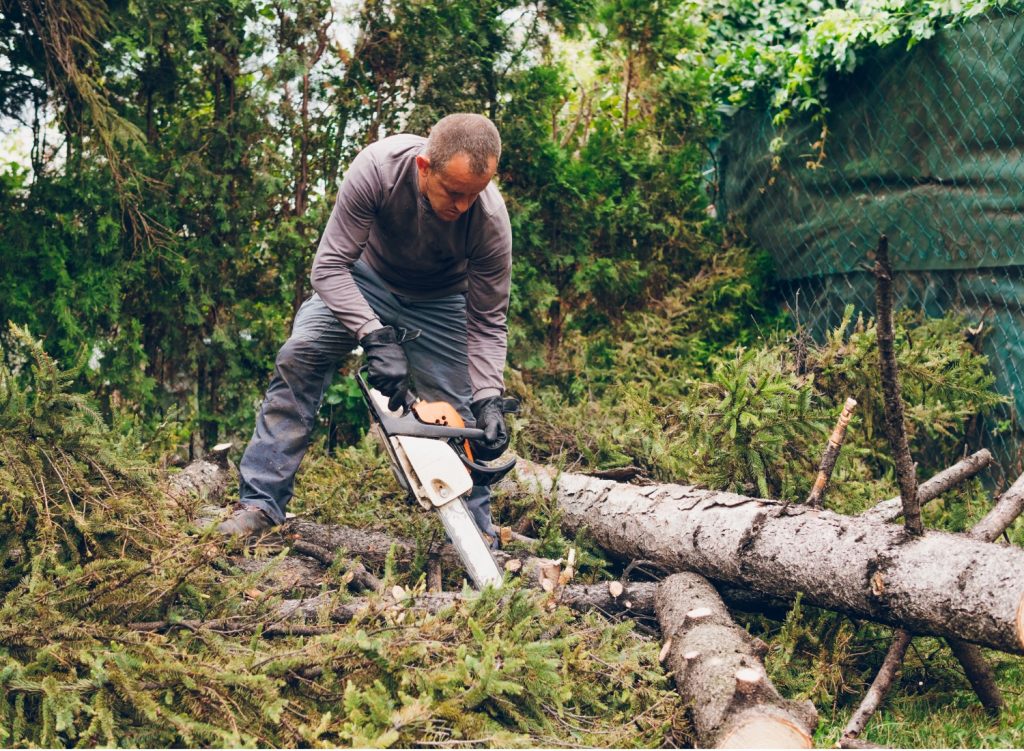DIY Landscaping: How to Cut Down a Tree Safely and Efficiently

A well-maintained yard not only enhances the beauty of your home but also adds value to your property. However, when a tree becomes a safety hazard or hinders your landscaping plans, it might be necessary to cut it down. While hiring a professional tree removal service is often the safest option, many homeowners prefer the DIY approach to save money and tackle the project themselves. In this guide, we’ll walk you through cutting down a tree safely and efficiently.
Safety First
Before we dive into the steps for tree removal, let’s emphasize the importance of safety. Tree cutting can be dangerous, so it’s crucial to take proper precautions:
- Assess the Risk: Evaluate the tree’s health, size, and proximity to structures or power lines. If the tree poses a significant risk, consider consulting a professional.
- Wear Protective Gear: Always wear safety gear, including a helmet, eye protection, ear protection, gloves, and steel-toed boots.
- Plan Your Escape: Identify escape routes if the tree falls unexpectedly, and never stand directly under the tree while cutting.
- Tools and Training: Ensure you have the necessary tools, such as a reliable pole saw, and the training to use them.
- Check Local Regulations: Before starting the project, check local regulations and obtain any required permits for tree removal.
Choosing the Right Tool: The Pole Saw
A pole saw is a versatile and essential tool for tree cutting, especially when dealing with smaller trees or branches that are out of reach. It consists of a chainsaw attached to a telescopic pole, allowing you to make precise cuts from a distance. Pole saws come in various sizes and power options, so choose one that suits your needs.
Why Use a Pole Saw?
- Safety: A pole saw allows you to maintain a safe distance from falling trees or branches, reducing the risk of injury.
- Reach: It’s ideal for pruning high branches or small trees that are otherwise difficult to access.
- Precision: Pole saws enable you to make precise cuts, minimizing damage to surrounding vegetation.
Guide to Cutting Down a Tree
Now, let’s go through the steps for cutting down a tree safely and efficiently:
Step 1: Evaluate the tree
As mentioned earlier, assess the tree’s health and identify potential hazards. Decide on the direction in which you want the tree to fall, known as the “fall zone.”
Step 2: Clear the area
Remove any obstacles from the fall zone, including plants, furniture, or structures. Ensure there’s ample space for the tree to fall without causing damage.
Step 3: Create a notch
Stand on the side of the tree facing the desired fall zone. Use the pole saw to make a horizontal cut (the notch) about one-third of the way through the tree’s diameter. Then, make a downward-angled cut above the notch to create an open-faced notch.
Step 4: Make the felling cut
On the opposite side of the tree, a few inches above the notch, make a straight horizontal cut, which will meet the angled cut from the notch. This cut will cause the tree to fall in the desired direction.
Step 5: Retreat safely
As you make the felling cut, the tree will lean and fall. Move away from the tree along your predetermined escape route.
Step 6: Remove stump and branches
After falling the tree, you can use your pole saw to remove branches and cut the stump to ground level.
Step 7: Clean up
Finally, clean up the area by removing debris and branches. Consider recycling or repurposing the wood.
Tips for Efficiency and Safety
- Maintain your equipment: Regularly inspect and maintain your pole saw to ensure it functions correctly. Keep the chain sharp for clean and efficient cuts.
- Practice beforehand: If you don’t have experience with a pole saw, practice on smaller branches before tackling a tree.
- Seek assistance: For larger trees or those close to structures, it’s wise to seek professional assistance to ensure safety.
Conclusion
When done safely and efficiently, cutting down a tree can be a rewarding DIY landscaping project. By following the steps outlined in this guide and using the right tools, you can enhance the beauty of your property and improve safety. Always prioritize safety, and if you need clarification on any aspect of tree removal, consult a professional for assistance.
